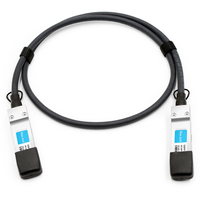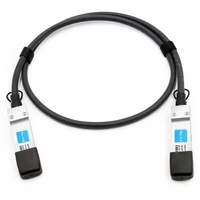The demand for high-speed data transfer is increasing in the rapidly changing world of internet connectivity. The QSFP+ or Quad small form-factor pluggable plus cables are crucial in meeting this demand as they enable strong 40G Ethernet connections needed by data centers, businesses, and telecommunication infrastructures. This manual provides a detailed description of qsfp+ cables, including their design, operation principle, and areas of application. Delving into these features, such as technical specifications alongside associated merits, will enable people to comprehend more about how qsfp+ technology can enhance network performance in terms of speed, efficiency, and scalability for future growth since it supports all that. If you work in IT, the networking profession, or are just someone who wants faster internet connections, then through reading this article, you should be able to understand everything required when installing QSFP+ links within your network design.
What Are QSFP+ Cables?
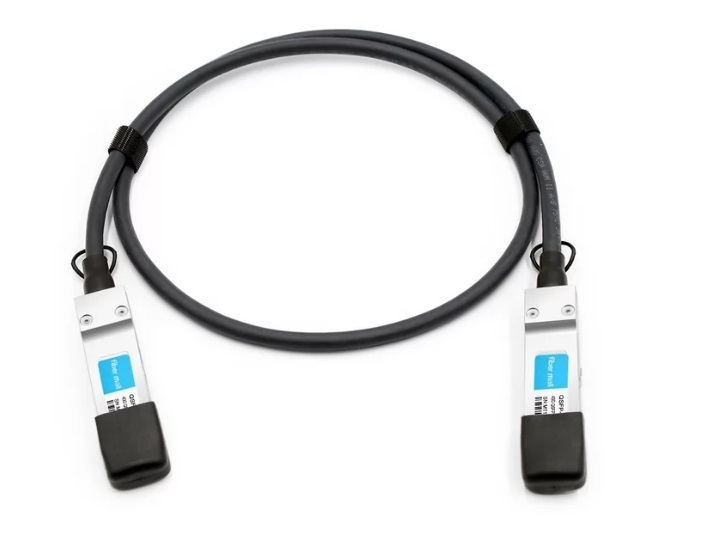
Understanding QSFP+ Cable Technology
To support 40G data rates, QSFP+ cables are made of four lanes that can each carry 10 Gbps. They use passive or active optical technology; active cables have built-in electronics to maintain signal strength over greater distances. Passive copper cables reach up to 100 meters, while active optical ones go as far as 300 meters. This makes them suitable for many different types of networks. The connectors in QSFP+ cables are standard, so they work with any device or vendor combination. They come in various lengths and designs, too, which allows them to be adapted for specific network needs if necessary.
Different Types of QSFP+ Cables
The two main types of QSFP+ cables are active optical cables and passive copper cables.
- Passive Copper Cables: They lack any active components, consisting only of copper wires. They are usually less expensive and can be used for short distance connections ranging up to hundred meters. Their cost-effectiveness coupled with ease of installation makes them popular in data centers as well as local area networks.
- Active Optical Cables (AOCs): These AOCs come with built-in optical transceivers, which enable the maintenance of signal integrity for longer distances of about 300 meters. For faster data transmission speed and places where electromagnetic interference may be a challenge, AOC is recommended above the other two options.
Both kinds of QSFP+ cables have been made to suit modern communication needs, with various versions available for different distances and speeds.
QSFP+ Cables vs. Traditional Ethernet Cables
When it comes to performance, bandwidth capacity, and application suitability, one can distinguish between QSFP+ cables and traditional Ethernet cables. The main purpose of QSFP+ cables is to ensure high-speed data transmission, which can reach up to 40 Gbps or more in higher-end settings. For this reason, they work best for applications that need a lot of data, like data centers, network aggregation points, or supercomputers. Conversely, Cat6 and Cat6a cables, being examples of ordinary Ethernet wires, normally support bandwidths up to 1 Gbps and 10 Gbps, respectively, with maximum effective distance limited at about 100 meters in typical use scenarios.
In addition, QSFP+ cables are built using small form-factor pluggable transceiver modules having multiple fibers within one connector thereby allowing higher port densities as well as lower power consumption on network devices due to space savings brought about by their compactness. However, widely used for general networking purposes, among other things, standard Ethernet connections might not meet requirements for speed or bandwidth when employed in situations where these types of capabilities are demanded most, such as ultrafast links between buildings occupied by different companies. Therefore, the choice between any two cable types mainly depends on specific needs imposed by the environment being connected, but if advanced communications involving large volumes should be made, then it would be better to select QSFP+ cables over others.
How do you choose the right QSFP+ cable for your needs?
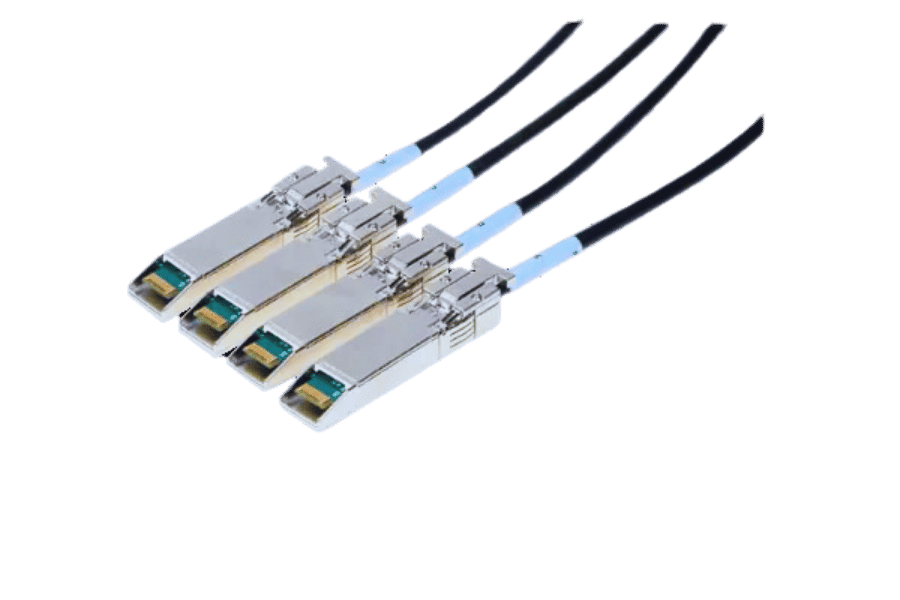
Criteria for Selecting a QSFP+ Direct Attach Copper Cable
While picking a QSFP+ Direct Attach Copper (DAC) cable, the following factors ought to be taken into account:
- Length: Nonetheless, make sure that the length of the cable is in line with what you specifically need for installation since the effectiveness largely depends on it, which is usually 1-7 meters.
- Data Rate: Confirm compatibility of data rate with desired transmission speeds so that they can ideally be at least 40 Gbps or higher.
- Connector type: Check if it has the right connectors for your equipment, which are QSFP+ ones.
- Quality Standards: Ensure its reliability by choosing those that are compliant with industry standards like IEEE 802.3 and SFF-8436, among others.
- Power Consumption: Evaluate how much power does this consume vis-a-vis system performance where lower power consumption should translate into better overall performance.
- Environmental Considerations – Evaluate the operational environment and ensure that it can withstand different temperature levels as well as humidity changes over time.
- Manufacturer Reputation—Always buy cables from manufacturers who have built their reputation over time by producing high-quality products backed up by strong support services.
Factors to Consider for Active Optical Cables
To evaluate Active Optical Cables (AOCs) for your networking needs, you should take into account the following:
- Length and Reach – These cables come in various lengths and can reach up to or more than 100 meters; thus, choose one that suits your installation.
- Data Rate and Bandwidth – Make sure an AOC supports required data rates, which are typically at 40 Gbps or higher, so as to meet the application’s bandwidth needs.
- Connector Compatibility—Confirm whether the connectors on an AOC are correct (e.g., QSFP+, SFP+) and compatible with your existing equipment.
- Signal Integrity and Latency – Choose those AOCs which have been designed with best signal integrity features for reducing data loss and latency during transmission thereby improving overall performance.
- Power Consumption – Look at how power efficient is an AOC since low power consumption leads to reduced operational costs alongside enhanced system performance.
- Temperature Range – Check through operational temperature specifications of different AOCs in order to know if they can withstand particular environmental conditions that may prevail within your area of use.
- Cost and Warranty: Consider the cost-effectiveness of different brands’ warranty terms because sometimes a manufacturer’s warranty indicates reliability as well as support for a product.
When to Use Breakout Cables
Breakout cables are important in any situation where one needs to create multiple network connections from one high-speed port. In other words, they are best used in places such as data centers where there is limited space because this ensures that information can be distributed effectively from a densely-populated switch port into several servers or gadgets. Additionally, breakout cables enhance the flexibility of networks by allowing devices of different form factors to be connected together; for example, it enables changeover between a 40G port and four 10G ports. When you want to scale up bandwidth but do not have more switch ports, then you should use breakout cables because they will help you achieve this, thereby saving on performance and cost efficiency in network infrastructure.
How Do QSFP+ Direct Attach Copper Cables Work?
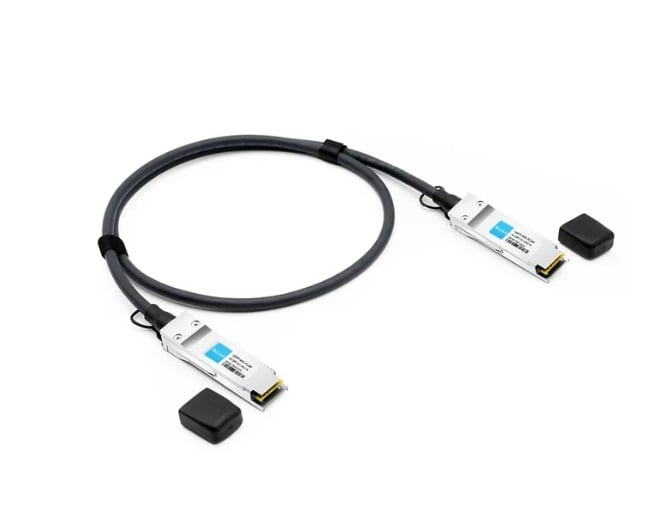
Anatomy of a Direct Attach Copper Cable
There are typically two primary parts to a Direct Attach Copper (DAC) cable: the copper cable itself and the connectors. Generally made up of several twisted pairs, this type of copper cable lets data travel quickly between devices without being affected by signals from other wires close by. Connectors on either side of the DAC are made for plugging directly into compatible ports on networking equipment like SFP+ or QSFP modules; these have shielding around them so that electromagnetic interference is reduced and transmission quality remains stable. To maintain affordability over short distances where many connections must be made within limited spaces such as data centers or crowded networks, DAC cables come in fixed lengths.
Performance Benefits of Direct Attach Cables
Within high-density network environments, Direct Attach Copper (DAC) cables provide many performance benefits that help it become the top choice. Firstly, DAC cables offer low latency data transmission. Generally, latencies of about 0.5 microseconds per meter are achieved by them. This feature is very important for applications that need real-time data processing and minimal delay such as financial trading or online gaming.
Secondly, DAC cables can support high data rates; many of them have a rating of 10 Gbps per channel while some configurations even go up to 40Gbps or 100Gbps depending on specification like QSFP+ or QSFP28. These combined effects with its lightweight design which usually consumes power between 0.5 – 1.5 watts per port make it an energy efficient option especially when considering operational costs in data centres.
This apart from being true also complies with various robustness standards set by IEEE8023ae etc., which ensures reliability over different lengths normally up to 7 meters for passive cables while minimizing electromagnetic interference thus boosting signal integrity within noisy electronic environments.
Lastly, rapid deployment ease maintenance supported by quick connectivity tasks between different devices without requiring any transceiver modules coupled with lower initial investment cost illustrated by minimal power requirements throughout usage life compared against other similar technologies shows why they are considered best suited for modern networking challenges in terms total cost ownership(TCO).
Practical Applications of DAC Cables
DAC cords are generally used in high-performance networking environments like data centers and enterprise networks. They can communicate large amounts of data, which means that they are best for short-range applications, including interconnecting switches with servers or between network devices in one rack; thus, they reduce latency significantly, thereby improving the overall efficiency of the system. Furthermore, DAC cables have found a place among high-frequency trading platforms where quick transmission of information is crucial in order to gain a competitive advantage.
In AV applications within high-definition audio and video systems, DAC cords often serve as intermediates through which signals are transmitted from one device to another, as video switches to projectors, for instance, this enables clear and reliable signal transfer. Besides being robustly constructed, these cables also exhibit low electromagnetic interference, making them perfect choices where electronic noise poses a concern, such as in industrial setups or crowded server rooms.
Lastly but not least important is cost effectiveness together with ease of use during temporary network connections hence popularity of DAC wires in places like event venues or pop-up installations. In other words organizations can scale up their infrastructures according to operational needs while at the same time optimizing total ownership costs.
What Are the Common Lengths and Specifications for QSFP+ Cables?
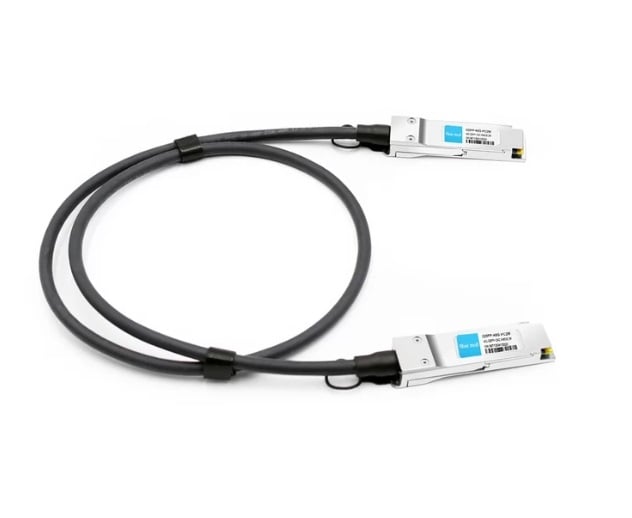
Standard Lengths: 1m, 3m, 5m, and Beyond
QSFP+ cables have different standard lengths to cater to various networking needs. However, the most common include 1 meter (m), 3m, and 5m, although longer options are also available for specific applications.
- 1 Meter (m): It is ideal for short-length connections in densely populated setups such as within server racks or between closely located devices. This length ensures signal loss is minimized while data integrity is maintained at high levels.
- 3 Meters (m): This is a flexible choice that suits a moderate distance where performance cannot be compromised. It is often used in data center interconnects and enterprise networks.
- 5 Meters (m): These have been made for slightly longer runs enabling connection of devices located farther apart with low latency and high throughput still achieved.
Apart from these standard lengths, manufacturers usually offer customized cable lengths over five meters depending on specific installation demands. For example, cables can be specified to go up to as far as 30 m or more, particularly in environments that cannot allow you to maintain tighter configurations. Therefore, it is crucial that cable specifications should be examined together with the cable length since longer cables may introduce increased latency as well as possible degradation of signal quality; thus, its meticulous selection is necessary for optimal network performance.
Technical Specifications to Look Out For
To ensure maximum performance and compatibility, there are several technical specifications that you need to consider when selecting QSFP+ cables for your network infrastructure:
- Data Rate – The maximum data rate that can be achieved by a QSFP+ cable is 40 Gbps. It is important to verify whether the cable can support such speeds especially for applications that require high-performance.
- Connector Type – Make sure that the cable has QSFP+ connectors which are designed specifically for use in densely populated areas where switches, routers, servers etc., may be congested together requiring efficient connections.
- Cable Type – There are two types of QSFP+ cables; passive copper and active optical cables (AOC). Passive copper cables are used over short distances (about 7m or less) while AOCs can extend connectivity up to 100m or more with minimal signal loss.
- Power Consumption – Consider your setup’s power budget. Passive copper cables consume less power than AOCs hence they save energy when used for short links.
- Jacket Material – The outer covering of a cable affects its durability and flexibility. Therefore choose those with suitable jackets that can withstand environmental conditions particularly dynamic or high traffic areas.
- Pinout Configuration – Pinouts must match device requirements if different configurations may affect performance leading to connection problems therefore ensure this during the selection process.
By considering these factors during selection, you will improve the dependability and productivity of your network, thereby allowing seamless transmission of data across various environments.
Compatibility with Networking Equipment
When choosing QSFP+ cables, it is important to make sure that they are compatible with the networking equipment to which they would be connecting. The majority of modern switches, routers, and servers that support high-speed data transfer use QSFP+ interfaces and, therefore, can be easily integrated, provided the right cable type is used. Confirm the following:
- Supported Standards: Ensure both devices support the same data transfer standards such as 10G, 40G or even higher protocols for better performance.
- Firmware Compliance: Networking equipment firmware version may affect compatibility. Updating firmware can increase interoperability with various QSFP+ cables especially from different manufacturers.
- Cable Length Specifications: Be aware of maximum supported cable lengths for both passive copper and AOC cables because exceeding these distances could cause performance degradation or loss of connectivity.
- Vendor Recommendations: Manufacturers may give specific suggestions on what types of cables work well with their devices; this helps in selecting appropriate ones that will not compromise network performance and reliability.
By following these rules, one can successfully deploy QSFP cables into any existing network infrastructure without compromising to meet performance standards each time.
What Are the Key Features of Cisco QSFP+ Cables?
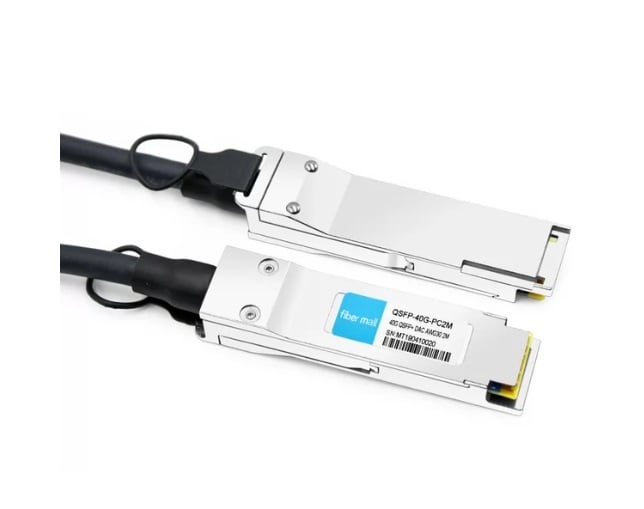
Overview of Cisco’s QSFP+ Product Line
The QSFP+ product family of Cisco includes many options that can meet fast connection demand in different network structures. Here are some key features:
- Support for data rate: 40G data rates are compatible with the use of high bandwidth applications.
- Types of cables: passive copper cables (for shorter distances) and active optical cables (AOC) for longer distances are provided to optimize performance depending on where they are being deployed.
- Compatibility: It is designed to work well with a variety of Cisco switches, routers, and other networking devices, thus ensuring interoperability and uniformity in performance.
- Robustness/reliability: It is made tough enough for data center environments which increases its useful life while reducing frequent replacements.
- Management simplicity: Advanced monitoring support by Cisco QSFP+ cables helps with troubleshooting and network management.
With this wide range of products, users can easily select what suits their needs best so as to improve networking infrastructure.
Why Choose Cisco for Your QSFP+ Needs?
Cisco is the best choice for QSFP+ because they are dedicated to providing high-quality networking solutions that perform well and are innovative. Cisco has been around for a long time in this industry, so you can trust that their cables were designed with strict performance requirements in mind – even if the environment demands it harder than usual, they will still deliver data reliably. Moreover, Cisco offers lots of different products to support them along with resources that help users achieve maximum network efficiency, thus reducing downtimes while improving overall operational effectiveness; what’s more, these products can be readily integrated into any existing infrastructure thanks to their focus on interoperability thereby making upgrades or expansions seamless where necessary. Additionally, thanks to its strong warranty policy coupled with reliable support services offered by Cisco, such organizations tend to get connected very fast since this company does not joke around when it comes to ensuring connectivity speeds do not go down frequently, especially where clients would expect high-speed internet connections at all times.
Comparing Cisco’s Passive and Active QSFP+ Cables
To evaluate Cisco’s passive and active QSFP+ cables, it is important to know what each one does and when they should be used. Passive QSFP+ cables are cheaper because they use copper wiring instead of a transceiver chip like active ones do; this makes them good for short-range connections up to about 7 meters. They take power from the connected device, so they save energy over shorter distances, too. On the other hand, active QSFP+s have built-in transceivers that can amplify signals, enabling them to travel further without losing integrity – up to 100m or more sometimes. They may cost more, but if you need something faster over a longer distance, then this is the way to go! Distance, budget and bandwidth requirements should all be taken into account based on individual needs when choosing between these two types of cables for your infrastructure.
Reference Sources
Frequently Asked Questions (FAQs)
Q: What is a QSFP+ cable, and what is its relationship with 40G connectivity?
A: A QSFP+ cable, e.g., Quad Small Form-factor Pluggable Plus cable, refers to a high-speed hot-pluggable transceiver used in data communication applications. In other words, it can support 40G (40 Gigabits per second) Ethernet connectivity to meet the needs of high-performance computing and networking environments.
Q: What are the different types of QSFP+ cables available for 40G connectivity?
A: There are several types of QSFP+ cables that include passive DAC (Direct Attach Copper) cables, active optical direct attach cables, as well as fiber optic cables which vary based on distance and application requirements.
Q: Why use twinax cables for 40G QSFP+ connections?
A: Twinax cables are cheap; they have low power consumption and are mostly used for short-range 40G QSFP+. They have simple designs and are available as passive direct attach copper cables making them easy to use in data centers.
Q: How do I select the right QSFP+ cable for my network setup?
A: The choice of a QSFP+ cable depends on different factors such as distance requirements, power usage, compatibility among others. For instance, if you want to cover short distances within a rack then use passive DAC but if it’s long distance connection then fiber optic cables would be necessary. Also ensure that it is compatible with your network equipment such as Meraki or Dell switches.
Q: Is there any difference between passive and active DAC cables?
A: Yes there is. Passive DAC does not have signal amplification hence suitable for short distances usually up to 7 meters while Active DAC includes electronic components to boost signal thereby supporting longer distances up to about 15 meters without degrading signal integrity.
Q: Can 40G ports on different network devices be connected using QSFP+ cable?
A: Yes, it is possible to use a QSFP direct attach cable to connect two 40G ports located in different network devices provided that they conform to similar standards like 40GBASE-CR4 and capable of supporting 40G QSFP modules.
Q: What is the purpose of breakout cables when used with QSFP+?
A: A breakout cable or breakout DAC (Direct Attach Cable) is designed to split one single 40G QSFP+ connection into four SFP+ connections. This means that if you have compatible 40G QSFP transceivers, one 40G port can be linked with four different 10G ports.
Q: What lengths do QSFP+ cables come in?
A: There are various lengths of QSFP+ cables available depending on your networking requirements. Copper twinax cables can have common lengths like 1m,3m,5m,7m,10m, and even 20m, while fiber optic cables can go much longer depending on the type and application of the cable.
Q: Will any QSFP+ cable work with my existing network equipment?
A: The compatibility of different brands or models may vary hence it is important to check for Dell, Meraki or other OEM (Original Equipment Manufacturer) compatibility so as not to experience any issues.
Q: What are some important things I should look for in a product description for a QSFP+ cable?
A: Some key specifications that should feature in a product description include the type, which could be twinax or fiber optic; length, e.g.,10m or 20m; form factor, i.e., whether it’s a 4xSFP or 40GQSFP; passive/active features as well as compliance with certain standards such as 40GBASE-CR4 among others.

